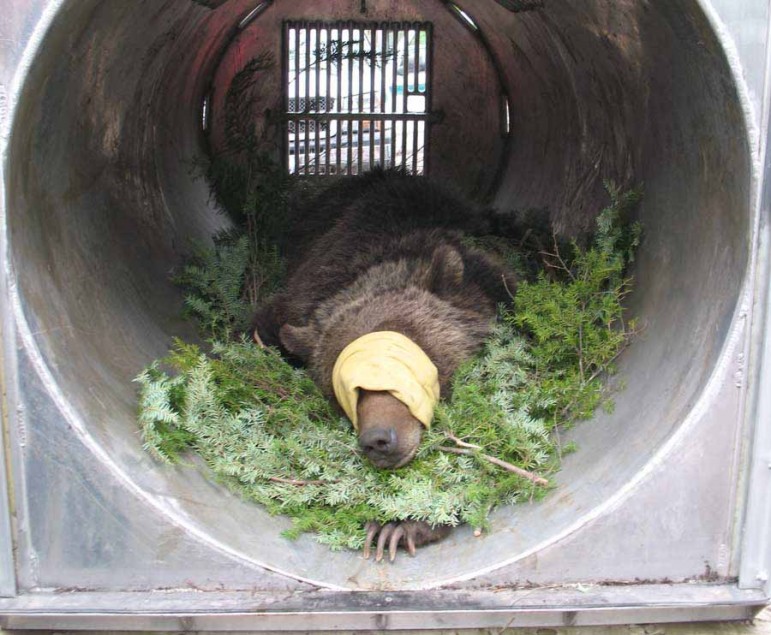
A tranquilized grizzly bear lies in a trap similar to those used for capturing and relocating problem bears around the greater Yellowstone area.
Biologists with the Interagency Grizzly Bear Study Team (IGBST) plan to conduct trapping of grizzly bears within Grand Teton National Park as part of ongoing research efforts required under the Endangered Species Act.
The trapping allows researchers to collect data and monitor the population of grizzly bears in the Greater Yellowstone Ecosystem (GYE). Monitoring of grizzly bear distribution, as well as their food selection and other activities, is vital to recovery of grizzlies across the GYE. Trapping operations will begin Wednesday, May 6, and continue through June 30, 2015.
Workers will bait and trap bears at remote sites across Grand Teton National Park. Once trapped, grizzly bears are sedated to allow wildlife biologists to radio-collar and collect scientific samples for study. All trapping and handling are done in accordance with strict protocols developed by the IGBST.
Trap sites will not be located near established hiking trails or backcountry campsites, and all sites will be posted with bright-colored warning signs around the closure perimeter. Potential access points will also be posted with warning signs. All backcountry users who come upon any of these posted areas must obey the warnings and stay out of the closure area.
Park officials caution that it is critical that all members of the public respect these warning signs.
The Interagency Grizzly Bear Study Team was established in 1973 to research and monitor bears across the GYE in a collaborative effort between federal land managers and state wildlife agencies. Gathering of critical data on these protected bears is part of a long-term research effort to help wildlife managers devise and implement programs to support the ongoing recovery of the GYE’s grizzly bear population.
The IGBST is composed of representatives of the U.S. Geological Survey, the National Park Service, the U.S. Fish and Wildlife Service, the U.S. Forest Service, the Eastern Shoshone and Northern Arapaho Tribal Fish and Game Department, and the states of Idaho, Montana and Wyoming.
For more information regarding grizzly bear trapping, call IGBST at 406.994.6675.
